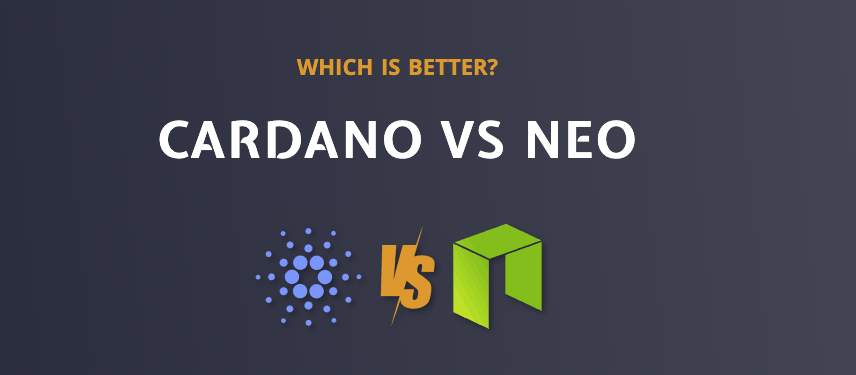
Neo and Cardano: Analyzing Their Feature and Future Potential
Potential or decadence?
The cryptocurrency market is filled with various projects, each promising to be the next big thing in blockchain technology. Among the well-known names are Neo and Cardano, two platforms that have drawn significant attention due to their unique features, development philosophies, and potential use cases. However, as the market matures, many investors are cautious about whether these projects have staying power or whether they might falter like other early contenders, such as EOS.
In this article, we will explore Neo and Cardano, their standout features, recent price trends, and examine whether they have a sustainable future in the rapidly evolving world of decentralized finance and blockchain technology.
Neo: The Smart Economy Platform
Core Features of Neo
Neo, often referred to as the “Ethereum of China,” is a blockchain platform that aims to create a smart economy by integrating digital assets, smart contracts, and digital identities. It was launched in 2014 by Da Hongfei and Erik Zhang under the name Antshares and later rebranded to Neo in 2017.
Key features include:
• Digital Assets and Digital Identity: Neo allows users to digitize real-world assets and claim ownership on the blockchain. The platform also emphasizes digital identity, ensuring compliance with regulatory standards, which makes it appealing for enterprises.
• Smart Contracts: Neo supports smart contracts, similar to Ethereum, but with some key differences. It uses NeoVM, a lightweight virtual machine designed for high performance and scalability.
• Dual-Token System: Neo has two native tokens: NEO and GAS. NEO is the primary investment token, while GAS is used to pay for transaction fees and to execute smart contracts.
• dBFT Consensus Mechanism: Unlike many blockchains that use proof-of-work or proof-of-stake, Neo uses delegated Byzantine Fault Tolerance (dBFT), which is more energy-efficient and provides faster transaction finality.
Does Neo Have a Future?
Neo has a strong foundation, especially in China, where it has ties to government initiatives and enterprise use cases. However, its future largely depends on its ability to foster a strong ecosystem of developers, applications, and users.
One concern is that Neo’s pace of development has been slower compared to newer, more agile platforms. It has also struggled to differentiate itself from other smart contract platforms, and the competition in this space is fierce.
Still, Neo’s focus on regulatory compliance and digital identity gives it a unique value proposition, particularly as governments look to regulate and integrate blockchain technology. If Neo can capitalize on this and attract more enterprise applications, it may have a solid future.
Cardano: The Peer-Reviewed Blockchain
Core Features of Cardano
Cardano, founded by Charles Hoskinson (one of Ethereum’s co-founders), stands out for its focus on academic rigor and peer-reviewed research. Launched in 2017, Cardano’s development has been divided into several phases, each focusing on different aspects of the platform.
Key features include:
- Ouroboros Consensus Algorithm: Cardano uses a unique proof-of-stake (PoS) consensus mechanism called Ouroboros, which is designed to be energy-efficient, secure, and scalable. This makes Cardano one of the most eco-friendly blockchain platforms.
- Layered Architecture: Cardano has a dual-layer architecture: the Cardano Settlement Layer (CSL), which handles the ledger of balances, and the Cardano Computation Layer (CCL), which runs smart contracts. This separation is intended to improve scalability and flexibility.
- Focus on Interoperability: One of Cardano’s long-term goals is to enable seamless interaction between different blockchain networks, making it a leader in the push toward interoperability.
- Governance and Treasury: Cardano has a built-in governance system that allows stakeholders to vote on protocol changes, and it features a treasury system that funds future development through transaction fees.
Does Cardano Have a Future?
Cardano’s future seems promising, particularly due to its emphasis on security, scalability, and sustainability. Its peer-reviewed approach has been slow, which has led to criticism, but this method could also result in a more secure and reliable platform in the long term.
The release of smart contract functionality in 2021 was a critical milestone, allowing Cardano to compete with platforms like Ethereum. However, Cardano’s ecosystem is still in its infancy compared to Ethereum and Solana. If it can attract developers and scale decentralized applications (dApps) on its platform, Cardano has a strong chance of thriving.
Moreover, Cardano’s focus on emerging markets, particularly in Africa, sets it apart from other projects. It aims to provide financial services to underbanked populations, which could be a massive growth opportunity if successful.
Comparison with EOS: Lessons from the Past
EOS, once touted as an Ethereum killer, raised over $4 billion in its ICO, only to falter after launch. The project struggled with governance issues, technical challenges, and a lack of developer interest. Many now view EOS as a cautionary tale of overpromising and underdelivering in the blockchain space.
What Neo and Cardano Can Learn from EOS
- Developer Engagement: EOS failed to build a robust developer community, which led to a lack of innovation and dApp development. Both Neo and Cardano must prioritize attracting developers and fostering a vibrant ecosystem of applications to avoid a similar fate.
- Governance: EOS’s governance model proved to be highly centralized, leading to disputes among block producers and community members. Cardano, with its built-in governance and voting system, seems better positioned to avoid these issues. Neo’s governance is more centralized but has made efforts to decentralize through its dBFT consensus.
- Execution and Adoption: The blockchain space moves quickly, and projects that take too long to develop or fail to deliver on their promises (as EOS did) risk becoming irrelevant. Cardano, with its slow but methodical development process, must ensure it delivers on its promises in a timely manner.
Final Thoughts: Do Neo and Cardano Have a Future?
Both Neo and Cardano bring unique value propositions to the blockchain space, but they also face significant challenges. While Neo must work to regain relevance in a highly competitive market, Cardano needs to translate its academic rigor into real-world adoption.
Neo’s focus on digital identity and enterprise solutions may give it a niche advantage, especially in China and regions with heavy regulatory scrutiny. Cardano, with its commitment to peer-reviewed research, environmental sustainability, and emerging markets, holds long-term potential, particularly in regions underserved by traditional financial systems.
However, in the fast-moving blockchain world, projects like EOS have shown that failure to execute or adapt can lead to irrelevance. The key for both Neo and Cardano will be sustained development, building active ecosystems, and delivering on their promises, while remaining agile enough to compete with newer, faster-moving platforms.
Only time will tell if Neo and Cardano will be long-term winners or if they will face the same fate as projects like EOS.
This article provides a balanced view of Neo and Cardano, comparing their strengths, weaknesses, and potential future, with a critical lens on whether they can avoid the pitfalls that led to the downfall of EOS.
